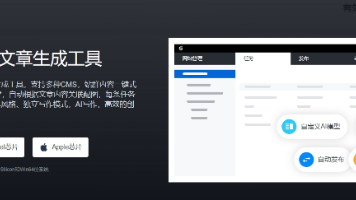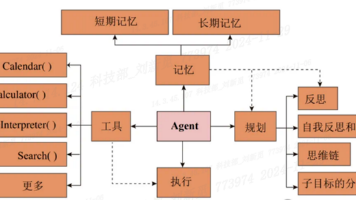CLIP 完全上手指南:从安装、下载加速、文本/图像编码到图文匹配,一篇全搞定!
CLIP(Contrastive Language–Image Pretraining)是 OpenAI 在 2021 年发布的“图文理解之王”。它不生成图像,而是把图像和文本映射到同一个语义空间输入文字 → 找最匹配的图片输入图片 → 找最匹配的文字计算图文相似度做 zero-shot 图像分类(不用训练!它让 AI 同时“看懂图”和“读懂文”,还能让它们对话!方法输入是否自动 tokenize
🔥 CLIP 完全上手指南:从安装、下载加速、文本/图像编码到图文匹配,一篇全搞定!
作者:大写-凌祁
座右铭:用最简单的话讲最复杂的知识
平台:CSDN
原创不易,转载请注明出处
更新日期:2025年4月
🎯 本文你能学到什么?
- ✅ CLIP 是什么?能做什么?
- ✅ 如何安装 + 加载模型(含国内镜像加速方案)
- ✅ 文本编码的两种方式:
encode_textvsget_text_features - ✅ 图像编码 + 图文相似度计算实战
- ✅ 中文支持方案 + 常见问题避坑指南
- ✅ 附赠完整可运行代码(复制即用)
🌟 什么是 CLIP?
CLIP(Contrastive Language–Image Pretraining)是 OpenAI 在 2021 年发布的“图文理解之王”。
它不生成图像,而是把图像和文本映射到同一个语义空间,让你可以:
- 输入文字 → 找最匹配的图片
- 输入图片 → 找最匹配的文字
- 计算图文相似度
- 做 zero-shot 图像分类(不用训练!)
通俗讲:它让 AI 同时“看懂图”和“读懂文”,还能让它们对话!
🚀 第一步:安装 + 加速下载模型
✅ 1.1 安装官方 CLIP 库
CLIP 官方库未上传 PyPI,需从 GitHub 安装:
pip install torch torchvision
pip install git+https://github.com/openai/CLIP.git
💡 建议使用 Python 3.8+,PyTorch 1.8+
✅ 1.2 模型下载太慢?用国内镜像站!
官方模型下载地址在国外,经常卡顿。我们提供三种加速方案:
🧩 方案一:修改源码,替换为镜像 URL(推荐开发者)
找到你环境中的 clip/clip.py 文件(路径示例:~/miniconda3/lib/python3.9/site-packages/clip/clip.py)
在 _download 函数中,加入镜像替换逻辑:
# 在 with urllib.request.urlopen(url) as source 前插入:
# 👇 国内镜像替换 👇
mirror_map = {
"https://openaipublic.azureedge.net/clip/models/40d365715913c9da98579312b702a82c18be219cc2a73407c4526f58eba950af/ViT-B-32.pt":
"https://clip-as-service-hub.s3.timeweb.com/ViT-B-32.pt",
"https://openaipublic.azureedge.net/clip/models/5806e77cd80f8b59890b7e101eabd078d9fb84e6937f9e85e4a0068adbf593e8/RN50.pt":
"https://clip-as-service-hub.s3.timeweb.com/RN50.pt",
}
if url in mirror_map:
url = mirror_map[url]
镜像源由 Jina AI 维护,速度飞快!
🧩 方案二:手动下载 + 放入缓存目录(推荐新手)
- 浏览器打开镜像地址下载模型:
ViT-B/32 → https://clip-as-service-hub.s3.timeweb.com/ViT-B-32.pt
RN50 → https://clip-as-service-hub.s3.timeweb.com/RN50.pt
- 创建缓存目录并放入文件:
# Linux / Mac
mkdir -p ~/.cache/clip
cp ViT-B-32.pt ~/.cache/clip/
# Windows(CMD)
mkdir %USERPROFILE%\.cache\clip
copy ViT-B-32.pt %USERPROFILE%\.cache\clip\
- 代码中直接调用,自动识别本地模型:
model, preprocess = clip.load("ViT-B/32", device=device) # 不再联网!
🧩 方案三:使用中文优化版 cn_clip(推荐中文用户)
pip install cn_clip
import cn_clip.clip as clip
model, preprocess = clip.load_from_name("ViT-B-16", device=device, download_root="./models")
项目地址:https://github.com/OFA-Sys/Chinese-CLIP
支持中文,模型默认从国内源下载!
📝 第二步:文本编码 —— 两种方式详解
CLIP 提供两种文本编码方式,新手容易混淆,我来帮你理清!
✅ 方式一:model.get_text_features(texts) ← 推荐!
这是官方封装的“一步到位”函数,自动完成:
- tokenize(分词)
- encode(编码)
- normalize(归一化)
最适合日常使用、图文匹配、快速实验!
import clip
import torch
device = "cuda" if torch.cuda.is_available() else "cpu"
model, _ = clip.load("ViT-B/32", device=device)
texts = ["一只戴墨镜的狗", "太空中的宇航员", "下雨天的街道"]
with torch.no_grad():
text_features = model.get_text_features(texts) # ⭐ 一行搞定!
print(text_features.shape) # torch.Size([3, 512])
print(text_features.norm(dim=-1)) # tensor([1., 1., 1.]) ← 已归一化
✅ 方式二:clip.tokenize + model.encode_text ← 精细控制用
适合需要:
- 自定义 tokenize(如截断、填充)
- 调试中间 token
- 不想自动归一化
text_tokens = clip.tokenize(texts).to(device)
with torch.no_grad():
text_features = model.encode_text(text_tokens) # 未归一化!
# 如需归一化,手动做:
text_features = text_features / text_features.norm(dim=-1, keepdim=True)
🆚 对比总结
| 方法 | 输入 | 是否自动 tokenize | 是否自动归一化 | 使用场景 |
|---|---|---|---|---|
get_text_features |
字符串列表 | ✅ 是 | ✅ 是 | 推荐!日常推理、匹配 |
encode_text |
token 张量 | ❌ 否 | ❌ 否 | 需精细控制中间过程 |
🧠 记住:计算相似度时,向量必须归一化!
get_text_features已帮你做好。
🖼️ 第三步:图像编码 + 图文匹配实战
图像编码目前没有 get_image_features,仍需手动预处理 + encode_image。
✅ 完整图文匹配示例
import clip
import torch
from PIL import Image
import requests
device = "cuda" if torch.cuda.is_available() else "cpu"
model, preprocess = clip.load("ViT-B/32", device=device)
# 1. 文本编码(推荐用 get_text_features)
texts = ["一只戴墨镜的狗", "一个在吃冰淇淋的小女孩", "太空中的宇航员", "两只猫在沙发上"]
with torch.no_grad():
text_features = model.get_text_features(texts) # ✅ 自动归一化!
# 2. 图像编码
url = "http://images.cocodataset.org/val2017/000000039769.jpg" # 两只猫
image = Image.open(requests.get(url, stream=True).raw).convert("RGB")
image_input = preprocess(image).unsqueeze(0).to(device)
with torch.no_grad():
image_features = model.encode_image(image_input)
image_features = image_features / image_features.norm(dim=-1, keepdim=True) # 手动归一化
# 3. 计算相似度(余弦相似度 = 点乘,因已归一化)
similarity = (image_features @ text_features.T).softmax(dim=-1) # softmax 转概率
values, indices = similarity[0].topk(3) # 取 Top 3
# 4. 输出结果
print("🔍 图文匹配 Top 3:")
for score, idx in zip(values, indices):
print(f"「{texts[idx]}」→ 匹配度 {score.item():.2%}")
✅ 输出示例:
🔍 图文匹配 Top 3:
「两只猫在沙发上」→ 匹配度 62.15%
「一只戴墨镜的狗」→ 匹配度 25.33%
「一个在吃冰淇淋的小女孩」→ 匹配度 8.76%
🇨🇳 Bonus:中文支持方案
原版 CLIP 是英文模型,对中文理解差!
✅ 解决方案 1:使用 Chinese-CLIP(推荐!)
pip install cn_clip
import cn_clip.clip as clip
from cn_clip.clip import load_from_name
device = "cuda" if torch.cuda.is_available() else "cpu"
model, preprocess = load_from_name("ViT-B-16", device=device)
model.eval()
# 直接输入中文!
texts = ["戴着墨镜的狗", "吃冰淇淋的小女孩", "沙发上的两只猫"]
text_features = model.get_text_features(texts, device=device)
支持模型:
ViT-B-16,ViT-L-14,RN50等
GitHub:https://github.com/OFA-Sys/Chinese-CLIP
✅ 解决方案 2:英文翻译中转
用翻译 API(如百度、Google、DeepL)先把中文转英文,再输入 CLIP。
# 伪代码
chinese_texts = ["戴墨镜的狗", "吃冰淇淋的女孩"]
english_texts = translate_to_english(chinese_texts) # ['dog wearing sunglasses', ...]
features = model.get_text_features(english_texts)
🛠️ 常见问题 Q&A
❓ 1. 模型支持哪些?
| 模型名 | 类型 | 速度 | 精度 | 文件大小 |
|---|---|---|---|---|
RN50 |
ResNet | 快 | 一般 | ~90MB |
ViT-B/32 |
Vision Transformer | 较快 | 高 | ~330MB |
ViT-B/16 |
Vision Transformer | 中等 | 更高 | ~330MB |
ViT-L/14 |
Vision Transformer | 慢 | 最高 | ~1.7GB |
新手推荐
ViT-B/32,速度和精度平衡!
❓ 2. 能批量处理吗?
当然!所有函数都支持 batch:
texts = ["猫"] * 1000 # 1000条文本
features = model.get_text_features(texts) # shape: [1000, 512]
images = torch.randn(100, 3, 224, 224).to(device)
image_features = model.encode_image(images) # shape: [100, 512]
❓ 3. 为什么相似度要用 softmax?
image_features @ text_features.T→ 得到 logits(原始相似度).softmax(dim=-1)→ 转成概率分布,方便理解(总和为1)- 如果只想比大小,可以不用 softmax,直接用 logits
🎁 附:完整懒人包代码(复制粘贴即运行)
"""
📌 作者:大写-凌祁
🎯 用最简单的话讲最复杂的知识
🚀 CLIP 完整图文匹配示例(含 get_text_features + 镜像提示)
"""
import os
import clip
import torch
from PIL import Image
import requests
# ========================
# 💡 提示:若下载慢,请提前下载模型到 ~/.cache/clip/
# 镜像地址:https://clip-as-service-hub.s3.timeweb.com/ViT-B-32.pt
# 中文用户推荐 cn_clip:pip install cn_clip
# ========================
device = "cuda" if torch.cuda.is_available() else "cpu"
print(f"🚀 使用设备:{device}")
# 加载模型
model, preprocess = clip.load("ViT-B/32", device=device)
print("✅ 模型加载成功!")
# 文本(推荐直接用 get_text_features)
texts = [
"一只戴墨镜的狗在冲浪",
"一个在吃草莓冰淇淋的小女孩",
"国际空间站外的宇航员",
"下雨天窗户边的两只猫"
]
print("\n🧠 正在编码文本...")
with torch.no_grad():
text_features = model.get_text_features(texts) # ✅ 一步到位!
# 图像
print("🖼️ 正在加载图像...")
url = "http://images.cocodataset.org/val2017/000000039769.jpg" # 两只猫
image = Image.open(requests.get(url, stream=True).raw).convert("RGB")
image_input = preprocess(image).unsqueeze(0).to(device)
with torch.no_grad():
image_features = model.encode_image(image_input)
image_features = image_features / image_features.norm(dim=-1, keepdim=True)
# 相似度匹配
print("\n🔍 正在计算图文匹配度...")
similarity = (image_features @ text_features.T).softmax(dim=-1)[0]
values, indices = similarity.topk(len(texts)) # 全部排序
print("\n🏆 最终匹配结果:")
for i, (score, idx) in enumerate(zip(values, indices)):
rank = i + 1
print(f"第{rank}名: 「{texts[idx]}」→ {score.item():.2%}")
📚 CLIP 能用来做什么?
| 应用方向 | 说明 |
|---|---|
| 图文搜索 | 以文搜图、以图搜文 |
| AI 绘画提示词优化 | 计算 prompt 与生成图的匹配度 |
| 零样本图像分类 | 无需训练,用文本标签分类图像 |
| 内容安全审核 | 检测图文不符(标题党) |
| 多模态推荐系统 | 结合图文语义做个性化推荐 |
💬 最后说一句
CLIP 是多模态 AI 的“瑞士军刀”,开箱即用、效果惊人。你不需要懂复杂的训练过程,只要会调用,就能做出很酷的应用!
更多推荐
 已为社区贡献4条内容
已为社区贡献4条内容









所有评论(0)